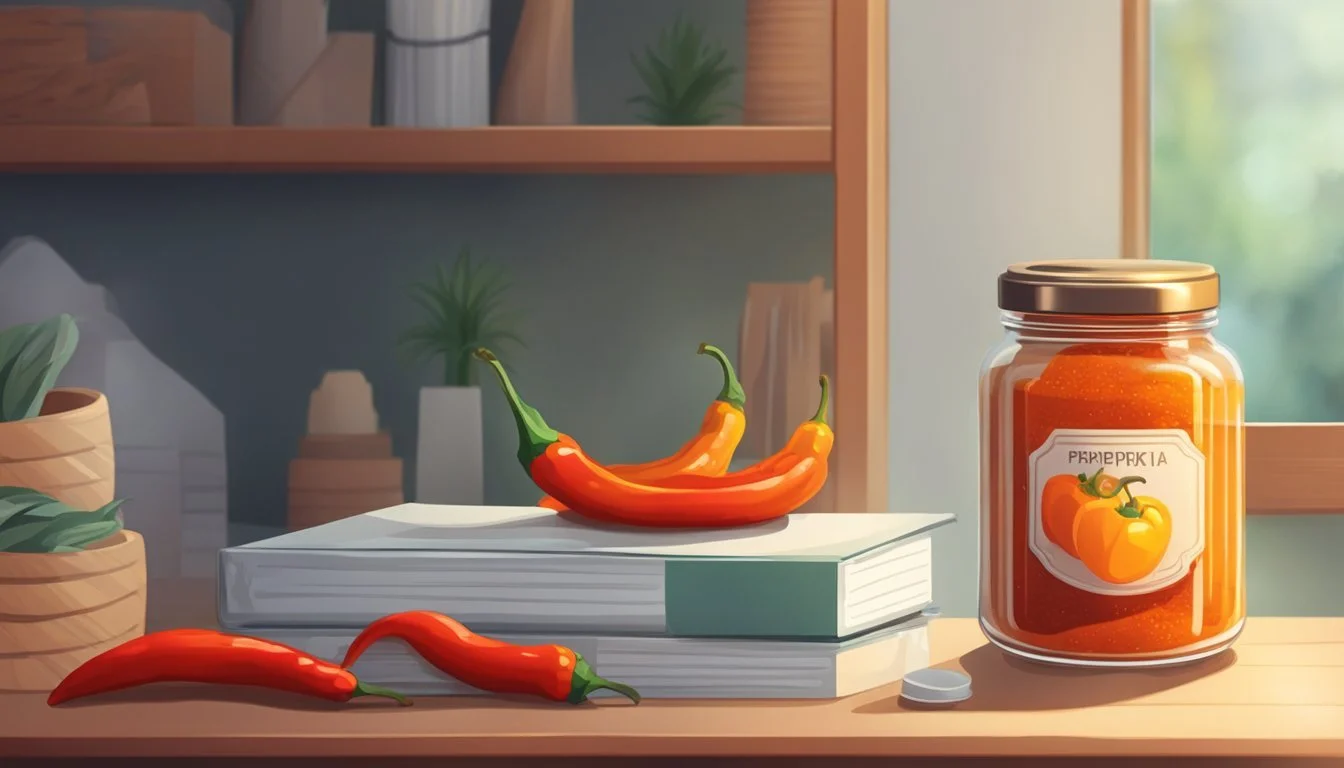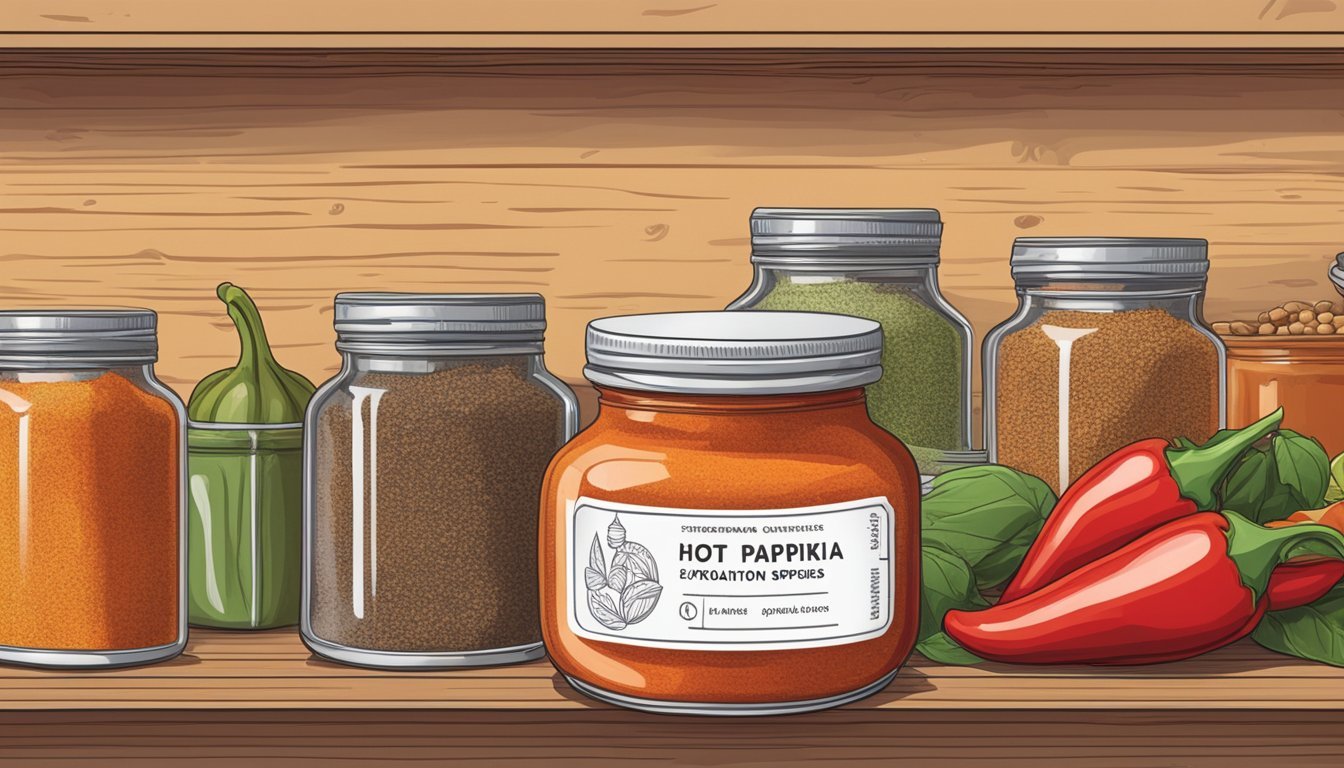How Long Does Hot Paprika Last?
Understanding Spice Shelf Life
Hot paprika, a spice made from dried and ground spicy peppers, offers both heat and a burst of flavor to a variety of dishes. Its shelf life, akin to other ground spices, generally spans between 2 to 3 years when stored properly. The key factors influencing the quality and longevity of hot paprika include its storage away from heat, moisture, and direct sunlight.
To maintain its potency and vibrant color, it is advisable to store hot paprika in a cool, dry place, possibly in an airtight container to prevent exposure to outside elements. In hotter climates, refrigeration is recommended to further extend its shelf life. Like all spices, hot paprika does not spoil in the conventional sense, but its flavors and colors fade gradually with time.
While hot paprika remains safe to consume beyond its peak period, its quality in terms of taste and intensity may diminish. Therefore, keeping an eye on its storage conditions is crucial for preserving its zest and ensuring that it enhances culinary creations with its intended piquancy.
Understanding Paprika
Paprika is a versatile spice derived from the ground pods of Capsicum annuum peppers. It varies widely in flavor and heat, offering a range of culinary uses that are integral to numerous cuisines.
Types of Paprika
There are several distinct types of paprika that culinary enthusiasts and chefs commonly use:
Sweet Paprika (how long does sweet paprika last?): This variety, often associated with Hungarian cuisine, is mild and sweet, made from red bell peppers without the seeds (how long do seeds last?), providing a vibrant color and subtle flavor.
Hot Paprika: Also known as spicy paprika, this type uses various hot peppers and may include the seeds, imparting a significant heat to dishes alongside its characteristic flavor.
Smoked Paprika: (how long does smoked paprika last?) Popular in Spanish dishes, smoked paprika gains its distinct profile by smoking the peppers over an oak fire, leading to a rich, smoky flavor.
Hungarian Paprika: Hungary boasts several paprika varieties ranging from sweet to very hot, with its flavor considered more robust due to the country's traditional processing methods.
Spanish Paprika: Also called "pimentón," Spanish paprika can be sweet or hot and is typically smoked, playing a key role in the country's gastronomy.
Each type of paprika offers a unique element to dishes, whether it be enhancing color, contributing to a subtle sweetness, or adding a fiery zest.
Paprika's Composition
Paprika powder is the result of air-drying and grinding various peppers of the Capsicum annuum species. The powder's composition creates both the spice's characteristic mild or pungent heat and its vibrant color, which can range from bright orange to deep red. The primary compounds responsible for these properties include:
Capsaicin: The active component in hotter varieties of paprika such as hot paprika, contributing to their spiciness.
Carotenoids: These pigments give paprika its color, with beta-carotene being a notable example that contributes to its vibrant red hue.
When discussing the flavors of hot paprika, it is essential to note that the presence of seeds and how the pepper is processed affect the intensity of both flavor and color. For example, hot paprika that includes seeds will pack more heat due to the higher capsaicin concentration found within the seeds.
Factors Affecting Shelf Life
Hot paprika's shelf life can vary depending on storage conditions. Here are the specific factors that can affect the potency and freshness of hot paprika.
Exposure to Air and Light
Exposure to air accelerates the oxidation process in hot paprika, leading to a quicker loss of its vibrant color and intense flavor. Similarly, exposure to light can degrade the spice's quality over time. Storing hot paprika in an airtight container and placing it in a cool and dark place helps preserve its quality.
Moisture and Humidity
Moisture and humidity can lead to the dreaded clumping and mold. Hot paprika must be kept in a dry environment to prevent these issues. The presence of humidity can be combated by ensuring that the spice is stored in a sealed container, away from potential sources of moisture.
Temperature and Heat Sources
Excessive heat can also diminish hot paprika's heat level and flavor. Storing it away from heat sources like stoves or ovens is essential. Maintaining a storage area like a pantry or cupboard that is not subject to temperature fluctuations will contribute to the optimal shelf life of the spice.
Proper Storage Techniques
To extend the longevity and maintain the quality of hot paprika, adequate storage methods are crucial. These techniques ensure that hot paprika retains its potency and flavor, contributing to its vibrant taste in culinary applications.
Airtight Containers
Storing hot paprika in airtight containers is essential for preserving its freshness. Containers should be made of materials that do not react with the spice, such as:
Glass jars: These are ideal as they do not retain odors and are easy to clean.
Plastic containers with tight seals: Ensure they are food grade and have a secure sealing mechanism to prevent air from entering.
The importance of airtight containers cannot be overstated, as they protect the paprika from moisture, air, and light — all factors that can degrade the spice's quality.
Pantry vs. Refrigeration
When choosing between pantry storage and refrigeration, consider the climate and the intended duration of storage:
Pantry: A cool, dark, and dry pantry is suitable for short-term storage of hot paprika. Ensure the spice is away from direct sunlight and sources of heat.
Refrigeration: For long-term storage, especially in hot climates, it is advisable to refrigerate hot paprika to preserve its color and prevent infestation. However, freezing is not recommended as it can alter the spice's texture.
Remember that each storage method aims to minimize exposure to heat, light, and humidity, key factors in maintaining the potency of hot paprika.
Signs of Deterioration
When assessing hot paprika for freshness, there are specific indicators one should observe. These pertain to the spice's color, aroma, and overall potency, with notable signs present in visual and olfactory changes.
Visual and Textural Changes
Hot paprika's color is a vital sign of its condition. Fresh paprika typically has a vibrant red hue, signaling full flavor and potency. Deterioration occurs as this intensity fades, transitioning to a dull, brownish color. Additionally, texture is an important aspect; fresh paprika should be free-flowing. Clumping suggests exposure to moisture, which can accelerate spoilage.
Color: Look for a vivid red; fading or brownish hue indicates age.
Texture: The presence of clumps can suggest moisture contamination.
Changes in Aroma and Potency
The aroma of hot paprika is another reliable indicator of its freshness. When fresh, it emits a characteristic spicy scent. Loss of potency in expired paprika results in a weaker, less distinct aroma. Similarly, flavor deteriorates over time and paprika that lacks its robust zest or tastes bland has likely surpassed its optimal lifespan.
Aroma: Should be distinctly spicy; a weakened scent suggests declining quality.
Potency: Diminished taste and efficacy in recipes can indicate expiration.
Health and Safety Considerations
When discussing the longevity of hot paprika, one must give consideration to the health implications of using spice beyond its best-by date, and the nutritional integrity of fresh paprika.
Risks of Consuming Expired Paprika
Expired paprika may not always present a direct health risk if there are no signs of spoilage, but the quality certainly degrades over time. There are a few indicators that one should not consume paprika:
Mold presence: If there is visible mold, it's imperative to discard the paprika completely as it can compromise immune function.
Unusual odors or a dull color: These are signs the spice has lost its potency and integrity.
Bug contamination: Sometimes spices can become home to insects, and one should discard the product immediately to avoid health risks.
Nutritional Benefits of Fresh Paprika
Consuming fresh paprika not only ensures aromatic and flavorful dishes but also offers several health benefits:
Vitamin A: Paprika contains this vital nutrient, important for good vision and skin health.
Antioxidants: Fresh paprika is rich in antioxidants, which can contribute to reducing the risk of certain types of cancer and combat free radicals in the body.
Digestive Support: A quality, fresh spice can promote efficient digestion and may alleviate flatulence.
Culinary Uses of Paprika
Paprika is a central ingredient in various global cuisines, recognized for its ability to infuse dishes with a distinctive smoky flavor and vibrant coloring. This spice adapts to a wide range of cooking methods and complements an array of ingredients.
Enhancing Flavor in Dishes
Paprika, especially the hot variety, adds a smoldering depth to dishes, contributing both color and a complex flavor profile. Its versatility makes it a go-to spice in the kitchen. Depending on how it's used, paprika can impart a subtle sweetness or a bold, spicy kick. It often finds its place as a seasoning for meats and vegetables, lending them a warm, smoky fragrance. The spice is known for its ability to elevate the taste of:
Meat: Whether rubbed on as part of a seasoning blend or used in marinades, paprika enhances the savory qualities of beef, pork, chicken, and lamb.
Vegetables: Sprinkled over roasted or grilled vegetables, (What wine goes well with grilled vegetables?) it can add a smokey note and transform a simple side dish into a memorable part of a meal.
Casseroles and Stews: In hearty meals like goulash, paprika's flavor permeates throughout and complements other spices in the recipe.
Deviled Eggs: A pinch of paprika on top adds color and a hint of piquancy, improving both presentation and taste.
Popular Paprika-Based Recipes
Certain recipes are renowned for showcasing paprika's dynamic flavor. Here are some prominent dishes where hot paprika is not just an ingredient but a star:
Goulash: This Hungarian stew is known for its rich paprika-infused sauce, featuring a balance of spiciness and smokiness.
Stews and Casseroles: Hot paprika is often the defining spice, bringing heat and depth to these comforting dishes.
Cooking with paprika transforms meals into culinary adventures, where its smokey flavor and spiciness are capable of defining an entire dish's taste. Whether chefs are looking for warmth or a bold flavor punch, paprika caters to an extensive palette of culinary applications.
Determining Paprika Longevity
When assessing the longevity of hot paprika, it is essential to consider factors such as the form of the spice, storage conditions, and dates indicated on packaging. Hot paprika is categorized as a non-perishable item but this does not mean it maintains its quality indefinitely.
Form of Paprika:
Whole paprika pods often last longer, with a typical shelf life of 4-5 years.
Ground hot paprika has a shorter shelf life, generally lasting 2-3 years.
Storage Conditions: Proper storage plays a pivotal role in extending the life of hot paprika:
Keep in an airtight container to prevent moisture and contaminants.
Store in a cool, dark place to protect from light and heat.
Refrigeration is recommended in hot climates to preserve color and potency.
Packaging Dates: Consumers should note the following dates on packaging:
Expiration date: refers to the last date hot paprika is expected to retain peak quality.
Best before date: indicates the manufacturer's estimate of when freshness begins to decline.
Regular inspection of the spice's aroma and color can help determine if it has started to lose its potency.
Expiry Date: While hot paprika does not spoil like perishable foods, its expiry date serves as a benchmark beyond which the spice may lose its characteristic heat and flavor.
In summary, to maximize the longevity of hot paprika, store it correctly and be mindful of the quality indicators provided by visual and olfactory examination, combined with the manufacturer's provided dates.









